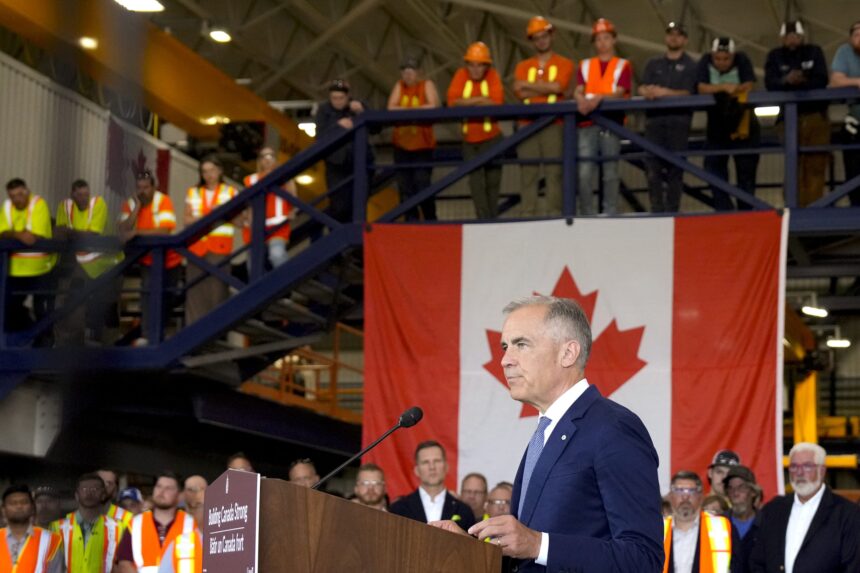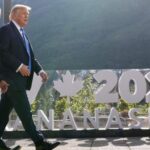In a decisive move that signals growing protectionism in North American trade relations, Ottawa announced sweeping restrictions on foreign steel imports yesterday, establishing what industry insiders are calling a “fortress Canada” approach to metallurgical policy. The measures come as bilateral tensions with Washington reach a critical point over the Biden administration’s intensifying steel tariff regime.
“We’ve been backed into a corner,” said Industry Minister François-Philippe Champagne during a press conference at Hamilton’s ArcelorMittal Dofasco facility. “These safeguards are not merely defensive posturing—they represent a strategic necessity to protect Canadian workers and our industrial sovereignty in an increasingly unstable global trade environment.”
The new restrictions will impose volume quotas and elevated tariffs on specialty steel products from several Asian and European producers, with particularly stringent measures targeting Chinese imports. According to Canada News analysis, the policy shift represents the most comprehensive overhaul of Canada’s steel import regime in over a decade.
Steel industry executives have applauded the government’s intervention. United Steelworkers Canada President Marty Warren told CO24 that “thousands of jobs across Ontario and Quebec’s industrial heartland have been hanging in the balance while foreign steel flooded our market at artificially low prices.”
However, the restrictions have triggered immediate concerns from downstream manufacturers who rely on imported specialty steels. The Canadian Association of Manufacturers and Exporters estimates the measures could increase input costs by 11-18% for automotive and aerospace sectors, potentially compromising competitiveness in these crucial export industries.
Trade economists note that Canada’s policy shift doesn’t exist in isolation. Dr. Eliza Montrose of the University of Toronto’s School of Global Affairs explained to CO24 Business that “we’re witnessing the fragmentation of global steel markets into regional blocs. The U.S. started this cycle with Section 232 tariffs, and now Canada is following suit with its own protective measures—a trend that fundamentally challenges the WTO framework.”
International reaction has been swift and largely negative. The European Commission issued a statement expressing “profound disappointment” in Canada’s “retreat from market principles,” while China’s Ministry of Commerce denounced the measures as “blatantly discriminatory” and threatened reciprocal action against Canadian exports.
Particularly concerning for Ottawa is managing the delicate relationship with Washington. Despite Canada’s measures mirroring American protectionism, the Biden administration has shown little inclination to exempt Canadian steel from its own restrictions. A senior White House trade official, speaking on condition of anonymity, indicated that “Canadian producers continue to benefit from government subsidies that distort fair competition,” suggesting bilateral tensions may worsen.
The economic stakes are enormous. Steel production directly employs over 23,000 Canadians and supports an estimated 100,000 indirect jobs. The industry generates approximately $15 billion in annual economic activity, concentrated in communities already struggling with manufacturing decline.
Climate considerations add another layer of complexity. Canadian steel producers argue their operations generate approximately 35% less carbon emissions per ton than global competitors, particularly those in China and India. Environmental policy experts suggest that allowing carbon-intensive foreign steel to displace domestic production could undermine Canada’s climate objectives.
As supply chains adjust to this new reality, Canadian consumers will likely face higher prices for everything from automobiles to appliances. The Canadian Construction Association projects that steel-intensive infrastructure projects could see cost increases of 7-9%, potentially delaying critical public works.
While the immediate economic implications are significant, the longer-term geopolitical consequences may prove even more profound. As CO24 World News has documented, the fragmentation of global trade into regional blocs threatens decades of economic integration that has underpinned global stability.
As this trade standoff intensifies, a fundamental question emerges for Canadian policymakers and citizens alike: In an era where global trade appears increasingly governed by power politics rather than rules-based cooperation, can middle powers like Canada maintain economic sovereignty without sacrificing the benefits of international commerce?

























